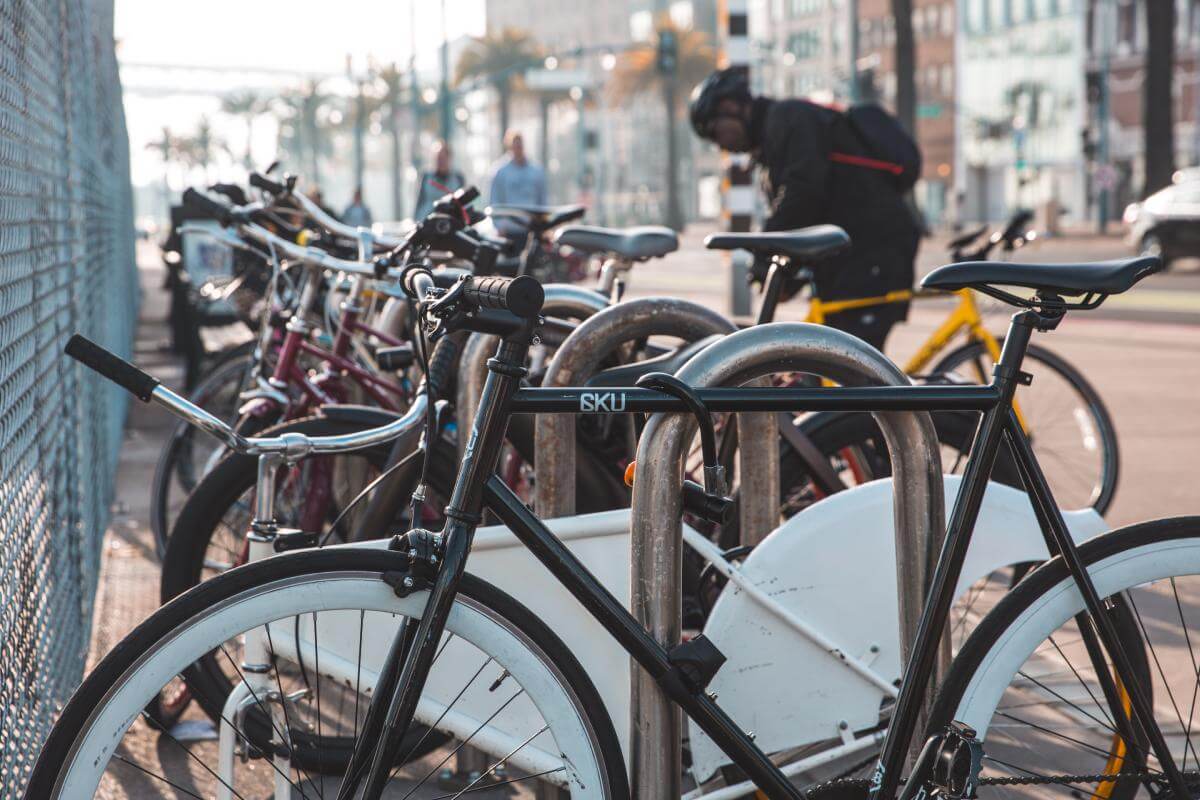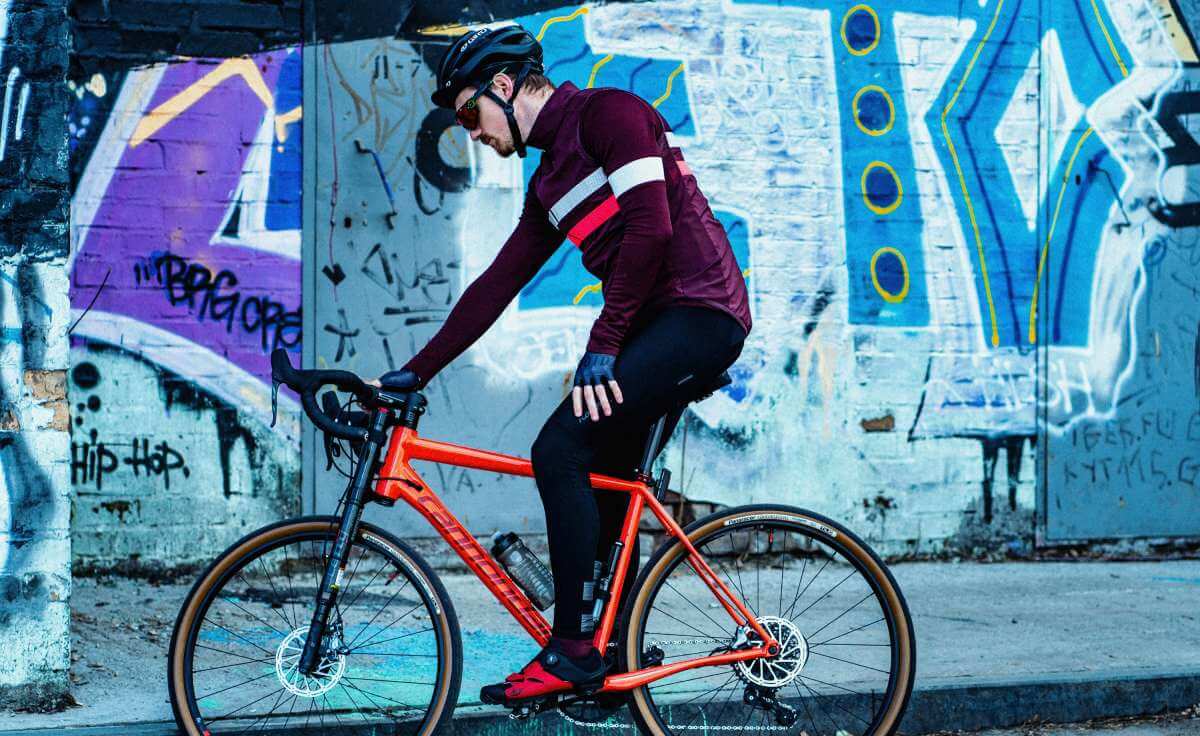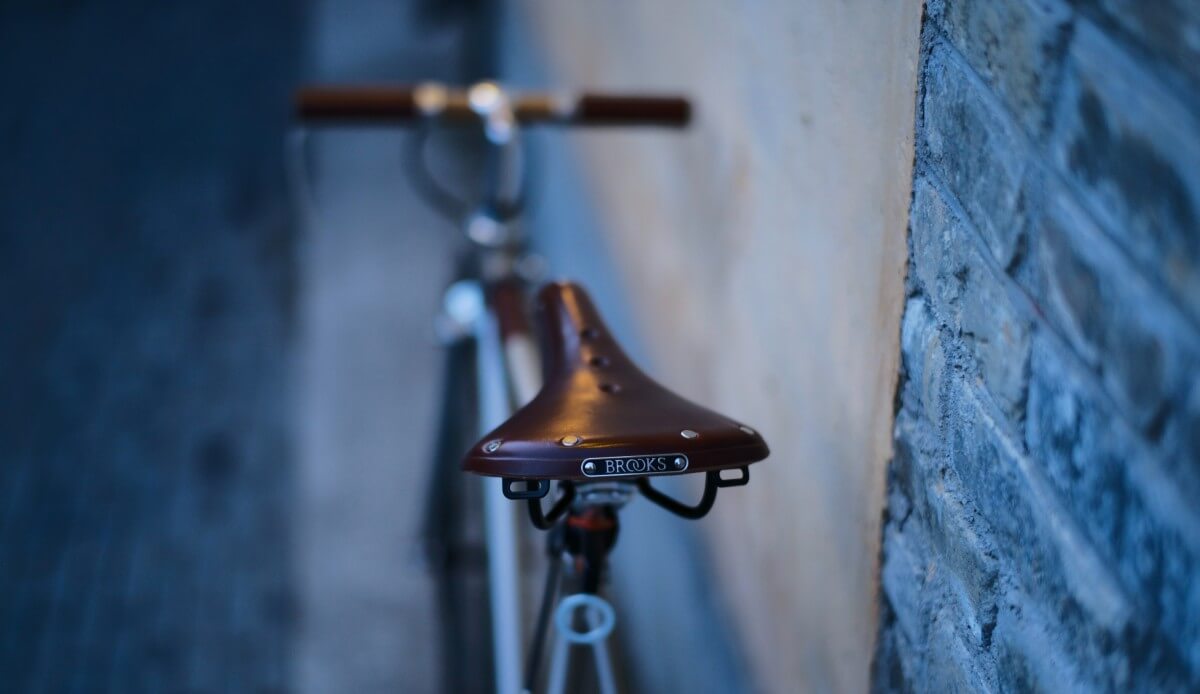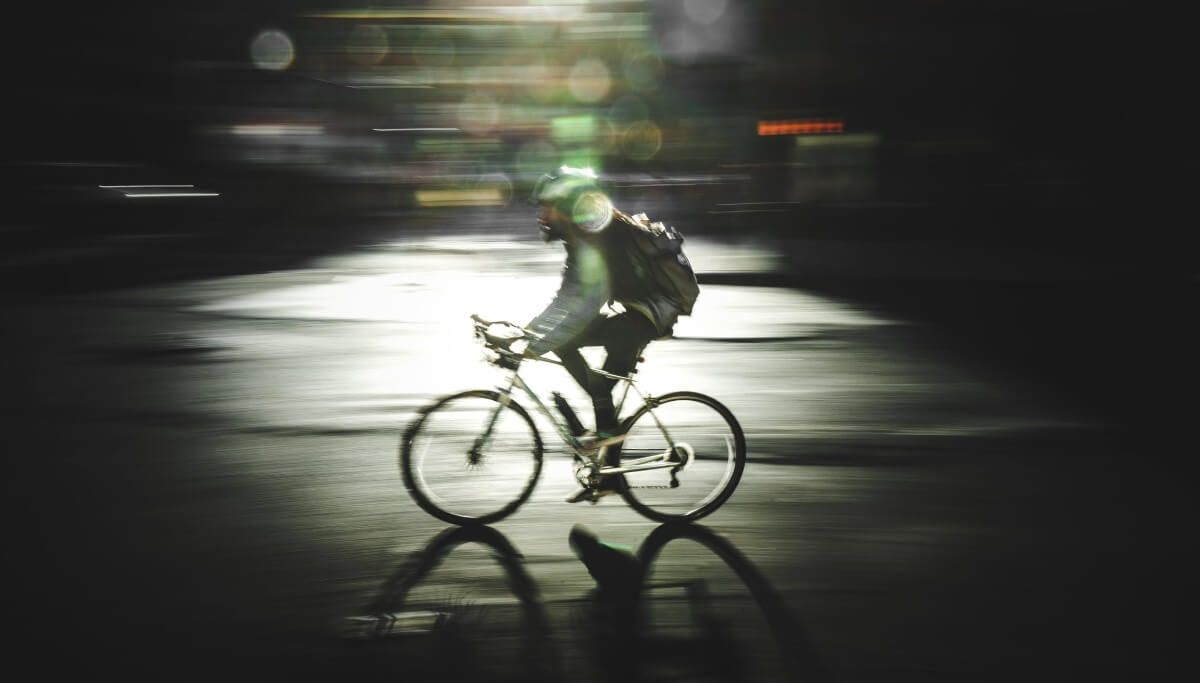Avoiding Bike Theft is Easier Than You Think
Losing your bike hurts. Here's how to protect your wheels.

Losing your bike hurts. Here's how to protect your wheels.

There’s nothing quite like getting a brand new bike. It’s a brilliant option for exercise and daily commuting. But buying a new bike will also give you a rush of nostalgia that you won’t get with many other “grown-up” purchases. Which is why falling victim to bicycle theft is such an emotional punch to the gut.
If you have contents insurance, a stolen bicycle would luckily be covered by your policy—that is if you include your Theft and Loss add-on, and if your bike’s locked up safely. That’s definitely a relief, but still doesn’t completely mend the wound that is having your bike stolen in the first place. Because let’s face it—the first thing you’re thinking after your bike is stolen is probably, “I knew I shouldn’t have locked my bike up here” or, “I knew I should have locked my bike up better” or, “Why am I such an unlucky and hapless idiot?”

A majority of bicycle theft is avoidable. That makes the sting of realizing your bike’s been stolen way worse. So to help avoid that nightmare, we asked some bike experts and some bike-theft experts (i.e, peA majority of bicycle theft is avoidable. That makes the sting of realizing your bike’s been stolen way worse. So to help avoid that nightmare, we asked some bike experts and some bike-theft experts (i.e, people who’ve had their bikes stolen—not people who steal bikes) for some tips on how to best protect your wheels.
Okay, so let’s start with the painfully obvious. When you go to lock up your bike… make sure you actually lock up your bike.
Take it from Scott Indrisek, managing editor at Lemonade. “I lost my beloved Fuji Feather single-speed a few months ago because I ducked into a Thai restaurant for dinner and left the bike ‘locked’ outside,” Scott told us, with the defeated voice of someone who knew they f’d up.
“Forty-five minutes later, I came back out to find the bike gone, and my sturdy D-lock dangling from the street sign where it had been.”
Buying a new bike will also give you a rush of nostalgia that you won’t get with many other “grown-up” purchases—which is why falling victim to bicycle theft is such an emotional punch to the gut.
In his haste to devour a plate of basil chicken, Scott did the unthinkable: He locked his bike to the pole, without ensuring any part of the actual bike was involved in the equation. “A painful lesson learned,” he lamented.
While it seems like an easy mistake to avoid, things can happen when you’re in a rush. So always double check to make sure that, a) the bike is actually connected to the lock, and b) the lock itself is securely fastened.
Also obvious, but don’t leave your bike unattended under any circumstances—even if you’re just popping into the corner shop for a bottle of water. This would be a bike thief’s dream come true.
A poorly locked bike will disappear quickly, especially if you live in a major city. Putting a couple extra minutes of thought into how and where you’re locking your bike could go a long way in preventing your trusty steed from being bike-knapped.
Locking only your wheels to a pole appears to be a common mistake—especially if you happen to have a bike with quick-release wheels. If this is the case, anyone can just remove the locked wheel and steal your bicycle frame instead. Make sure you always lock your wheels plus bike frame.
For those who are extra-cautious, it might be a good idea to use two locks: a classic D-lock for the bike frame, and a chain that can be threaded through both wheels.

Location is also super important. If you’re in a major city like London, scaffolding, street signs, and fence posts are abundant and can work in lieu of a bike rack. But there are a few things to consider before letting your bike out of your line of sight. Your bike will only be as secure as the object it’s fastened to, so make sure you always choose an immovable object that can’t be easily broken.
When it comes to locking your bike, not all locations are safe. Avoid unsecured street signs or fences, and exercise extreme caution if you’re hooking your bicycle to construction scaffolding.
Double check the street sign to ensure it’s securely fastened into the ground. It’s not uncommon for street signs to become loose, making it possible for a thief to jiggle them out of their place and slide your bike off with ease. You’ll also want to avoid locking your bike to any wooden fences or any particularly thin pieces of steel—or, anything else you think might be easily snipped with a pair of bolt cutters.
If you’re locking up to scaffolding, make sure you’re only securing the bike to the vertical bars. The horizontal bars on scaffolding can be easily unscrewed and removed, leaving your bike vulnerable. If possible, try to avoid scaffolding all together. Scaffolding by nature is an impermanent structure, so the longer your bike is locked there, the more likely it is you’re going to lose that bike.
If you’re serious about the safety of your bike, it will definitely be worth it to invest in a few simple modifications that can significantly decrease the likelihood of it being stolen.
These mods can include a locking system for your wheels or a seat post clamp. These kinds of mechanisms are fairly inexpensive, and will also relieve the stress of having to use a bunch of different locks to lock up both wheels and the frame all at once.
And don’t forget about your bike’s nifty accessories. That expensive gel-cushioned bike seat you bought is super comfortable and looks really sleek—but your local bicycle thieves probably think so too. So if your bike’s saddle has a quick-release option, either take the seat with you or secure the seat by replacing the quick release with a binder bolt.

A bike shop in your area could also loop a chain between the frame and the saddle rails, which is another great way to deter seat-theft. If phrases like “binder bolt” or “saddle rails” mean nothing to you, just walk into your local bike shop and ask them to theft-proof your seat!
While you’re in the spirit of theft-proofing, be sure to write down your bike’s serial number and keep it somewhere safe and accessible. The serial number could become helpful later if you need to prove to your insurance company, the police, or a pawnshop that you own the bike.
One last important, but obvious tip: Purchase a bike according to your risk profile. If you live in a tiny studio apartment in the middle of a crowded city, and you know you won’t be able to store your bike anywhere indoors, it might be time to accept the fact that you absolutely should not buy that awesome £6500,000 titanium road bike you’ve been eyeing.
Bike thieves are innovative, which means that it’s unlikely anyone will ever create a lock that is 100% theft-proof. But spending a little money on a tough-to-crack lock will at least lower your chances of theft. There’s no easy way around it: A serious bike lock is going to be a bit cumbersome. But cheap, lightweight cable locks alone can be easily cut by savvy thieves, so the inconvenience is worth it.
If you want a D-shaped lock that can be affixed to your frame (or possibly tucked in your belt loop), Kryptonite is a go-to brand that rates their locks according to how intense they are. One of their D-locks, aptly named “Fahgettaboudit”, scored the maximum 10 out of 10 on Kryptonite’s security scale, and should deter any thief and their lock-breaking toolkit.
Kryptonite is a ubiquitous name in the lock game, but they’ve earned it—check out this list by the Cyclist, in which they dominate every category (full-size D-locks, flexible chain locks and mini D-locks), together with locks by Litelok and Abus.
Let’s say you followed all of these tips, and somehow, your bike still got stolen. You could first call your local police station to file a report, and then file a claim with your insurance company to try to recoup the amount it would take to purchase a replacement.
Or, maybe you’ve been preparing for this since the day you purchased your bike. We’re definitely not recommending you start your own vigilante bike-theft investigation, but there’s certainly some steps you can take to potentially make recovering your stolen ride a bit easier.
The first would be to purchase a GPS tracker. This might sound like something straight out of a Bond movie, but welcome to 2023, baby. These days, GPS trackers are tiny, affordable, and can be purchased online or in a bike shop. While it may not prevent your bike from being stolen in the first place, it can make tracking it down a lot easier.

Or, take the old-fashioned route. A common tactic is to write a short note on a tiny roll of paper and stuff it into your bike’s seat-post tube. Oftentimes, bicycle thieves will steal the bike with the intention of immediately trying to pawn it off to a shop, or sell it on Gumtree or Ebay. So on your note, you can write something like “If this bike was sold by anyone else other than Mrs. Original Bike Owner, it has been stolen,” along with your phone number. It might be a long-shot, but it’s definitely worth a try and requires minimal effort.
In addition, we highly recommend you register your bike for free at the Bike Register. If you do so, there’s a chance that once your stolen bike is recovered, you can easily prove your ownership of it.
If your bike does end up getting stolen, all hope is not lost. With your basic Lemonade contents insurance, your bike would be covered if it’s snatched from your flat. Adding the Theft and Loss add-on to your existing policy provides cover for a bike that’s been stolen away from home (if you’ve locked your bike with a high quality chain or D-lock, that is).
Also,any nifty anti-theft accessories you’d purchased for your wheels would be covered. You’d typically just need to provide your insurance company with proof of ownership of the bike, as well as a crime reference number to verify the facts of loss.
With Lemonade, you can even purchase high value items cover for your bike, which covers expensive bikes worth more than £2K against all named perils.
At the end of the day, bike theft is fairly avoidable. With a couple of sturdy locks, and the knowledge of how and where to effectively lock the bike, you should be in the clear. And if all else fails, your contents insurance company will likely have your back. Safe riding!
Please note: Lemonade articles and other editorial content are meant for educational purposes only, and should not be relied upon instead of professional legal, insurance or financial advice. The content of these educational articles does not alter the terms, conditions, exclusions, or limitations of policies issued by Lemonade, which differ according to your state of residence. While we regularly review previously published content to ensure it is accurate and up-to-date, there may be instances in which legal conditions or policy details have changed since publication. Any hypothetical examples used in Lemonade editorial content are purely expositional. Hypothetical examples do not alter or bind Lemonade to any application of your insurance policy to the particular facts and circumstances of any actual claim.